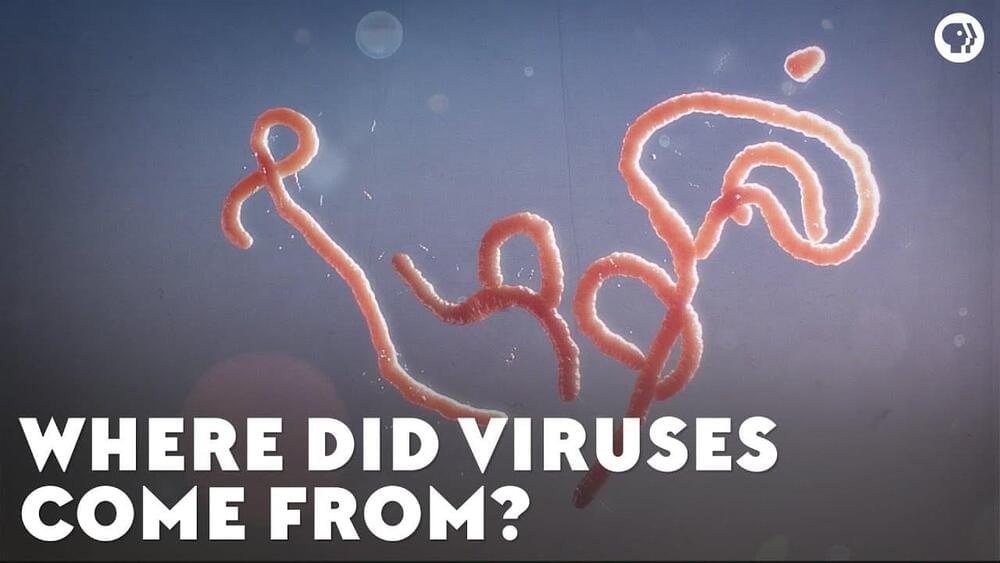Today’s retirement and pension plans were not designed for the current reality of people living longer, healthier lives. How will retirement be redesigned?
Where Did Viruses Come From?
Posted in biotech/medical
PBS Member Stations rely on viewers like you. To support your local station, go to http://to.pbs.org/DonateEons.
↓ More info below ↓
Learn more about CuriosityStream at http://curiositystream.com/eons.
There are fossils of viruses, of sorts, preserved in the DNA of the hosts that they’ve infected. Including you. This molecular fossil trail can help us understand where viruses came from, how they evolved and it can even help us tackle the biggest question of all: Are viruses alive?
Produced for PBS Digital Studios.
Want to follow Eons elsewhere on the internet?
Facebook — https://www.facebook.com/eonsshow.
Twitter — https://twitter.com/eonsshow.
Instagram — https://www.instagram.com/eonsshow/
References:
An international study has discovered a star traveling at more than six million km/h through the Milky Way after being flung from the center of our galaxy by a supermassive black hole.
Summary: 2022 has been a fantastic year for neuroscience and brain science research. Here, we take a look back over some of the most popular neuroscience research articles of the year.
Source: Neuroscience News.
For over 20 years, Neuroscience News has reported on the latest, ground-breaking neuroscience research. Every year, we like to take a look back at some of the most popular articles we have published on the website.
A teleoperated robotic system with magnetic actuation of a guidewire has been used for endovascular stroke intervention.
The researchers conducted a deep dive into the genetics of these tumours, both during the slow chronic phase and after the disease had transformed into the aggressive form. Researchers have identified an important transition point in the shift from chronic to aggressive blood cancer by conducting experiments in mice, providing a new intervention point for hampering the progress of the disease, according to a study.
Nobel Prize-winning physicist Frank Wilczek explores the secrets of the cosmos. Read previous columns here.
This year marks the 10th anniversary of the discovery of the Higgs particle. Now we can see it in perspective.
To understand its significance, imagine an ocean planet where intelligent fish evolve and start to make theories of how things move. They do experiments and deduce equations but it is a messy hodgepodge, because the fish, taking their ever-present environment for granted, think of their ocean as “empty space.” After decades of work, though, some realize that by postulating that “empty space” is a medium—ocean—that has mass and motion of its own, you can account for everything using simple, elegant laws (namely, Newton’s laws). Next, the fish start to wonder what their hypothetical ocean is made of. They boil some ocean, do some sophisticated spectroscopy, and ultimately identify water molecules. Imagined beauty guided them to concrete truth.
Seminar summary: https://foresight.org/summary/career-counseling-with-sonia-arrison/
Join us:
► Twitter: https://twitter.com/foresightinst.
► Facebook: https://www.facebook.com/foresightinst.
► Instagram: https://www.instagram.com/existentialhope/
► LinkedIn: https://www.linkedin.com/company/foresight-institute.
If you enjoy what we do please support us via Patreon: https://www.patreon.com/foresightinstitute.
If you’re interested in joining these meetings consider donating through our donation page: https://foresight.org/donate/
Foresight Institute advances technologies for the long-term future of life, focusing on molecular machine nanotechnology, biotechnology, and computer science.
Subscribe for videos concerning our programs on Molecular Machines, Biotechnology & Health Extension, Intelligent Cooperation, Neurotech, Space, and Existential Hope.
When we are shown two options, our eyes tend to flick from one to the other and back again several times as we deliberate on the pros and cons of each.
Researchers at Johns Hopkins University in the US have found that the speed with which our eyes dart between options gives away our true preference and predicts the ultimate decision we will make.
This quick eye movement – called a saccade – is what allows you to read; your focus travels abruptly from word to word, fixating briefly on some words before moving on to construct meaning from a block of text.









